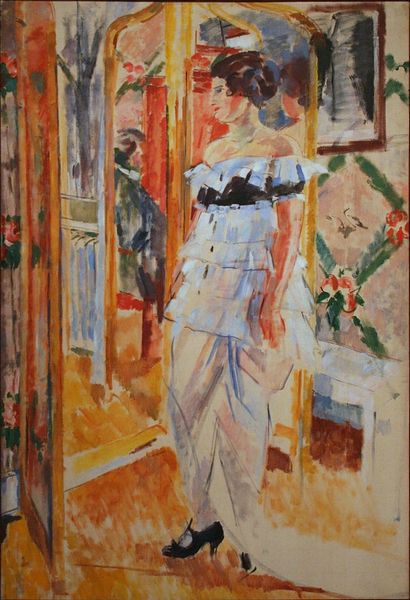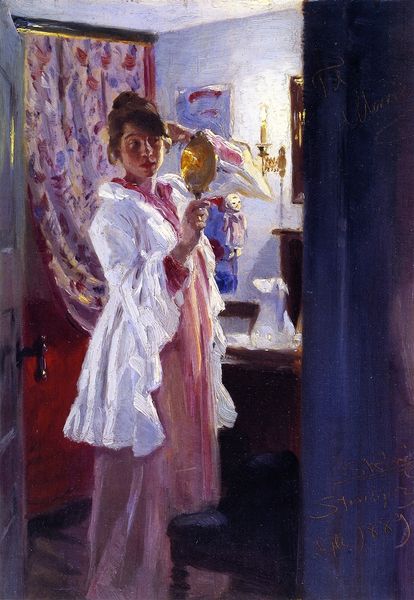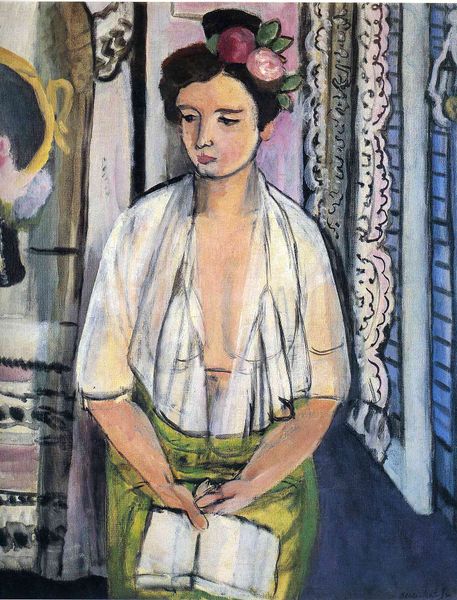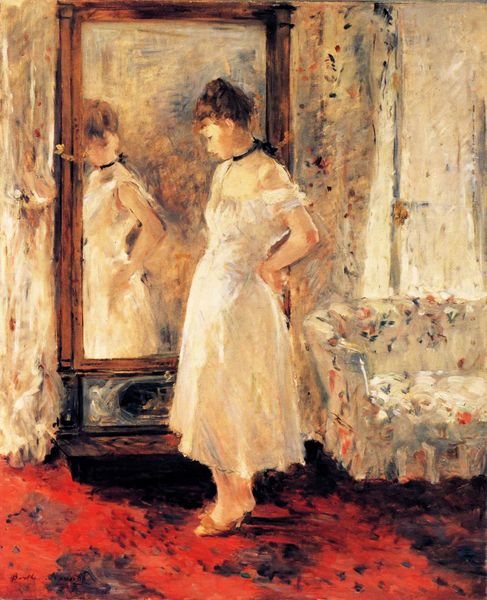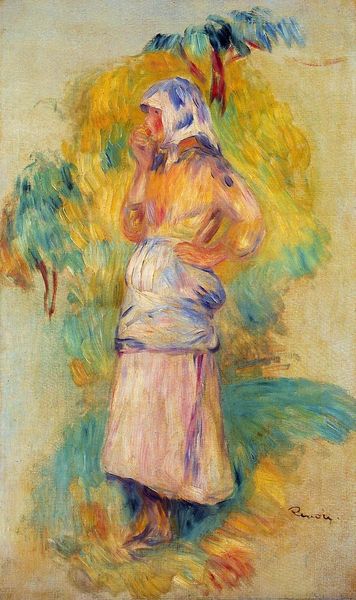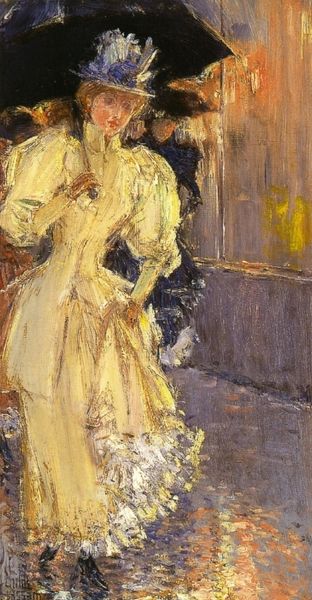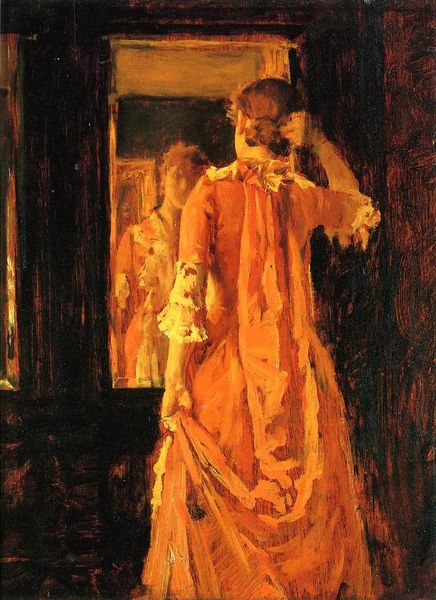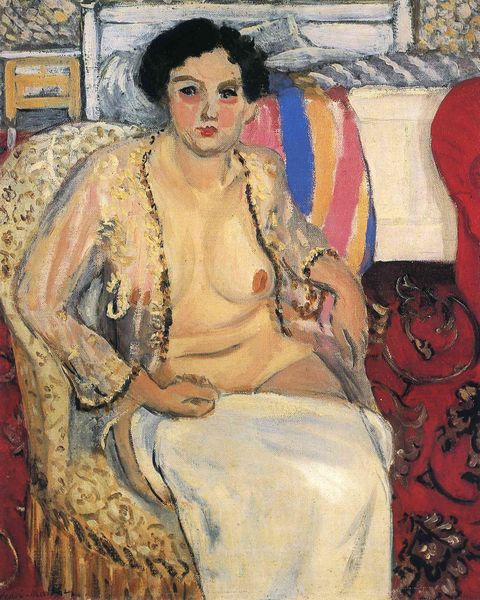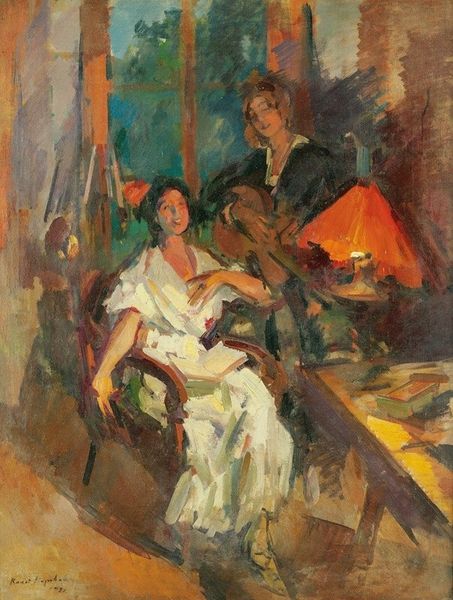
Copyright: Public domain US
Curator: Looking at Matisse's "Woman in White in Front of a Mirror," completed in 1918, one immediately notes the intimacy of the scene, rendered in oil paint. What are your initial thoughts? Editor: My first impression revolves around the textures and the surface. I'm interested in the materiality of that white dress, how it almost dissolves into the background, and what the choices regarding the making of this painting do to emphasize domesticity and routine labor. Curator: It's interesting you focus on the dress because the white here, or rather, the *idea* of white, functions as a fascinating interplay of innocence and experience. We need to ask ourselves, is the figure in a state of reflection or confronting a complex identity, navigating prescribed societal roles for women? Editor: I see what you mean, and that's where the materiality really anchors the work. Look at the brushstrokes; they're visible, intentional, refusing to fully blend and be something else. The materiality foregrounds the artist's labor. How does that change your perspective about the constructed identities? Curator: Well, the looseness destabilizes the bourgeois notions of beauty and femininity, doesn't it? Considering this piece through the lens of feminist theory, it reads like a commentary on the male gaze, almost dismantling it. The mirror implicates not just the woman, but also the viewer in this act of observation. It disrupts conventional power dynamics, in my opinion. Editor: But there's also something about the commerce and accessibility here, right? Mirrors became increasingly affordable and incorporated into domestic spaces at the turn of the century. So how do we see this moment relating not only to the artistic production but its larger consumption by society, creating shifting senses of identities within that landscape? Curator: Indeed, it underscores the complexities and even contradictions inherent in the work, and ultimately, how identity is very much molded, shaped and changed with socio-political circumstances. It makes you wonder: is it liberation or another kind of constraint? Editor: I'm more stuck on the methods for liberation. The choices Matisse made in manipulating the paint, or highlighting labor, point us to alternative strategies for claiming space. That makes it all worthwhile.
Comments
No comments
Be the first to comment and join the conversation on the ultimate creative platform.
